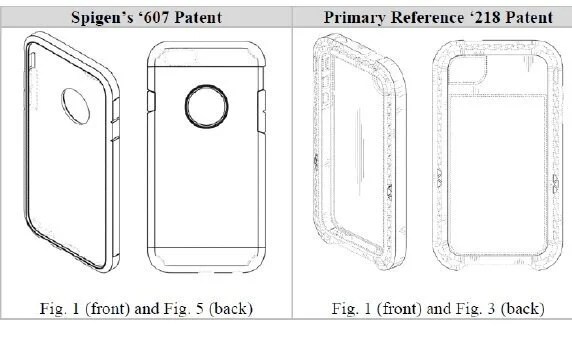Design patents continue to play a significant role in patent portfolios. Not only can design patents protect things like the design for a smart phone, but they can also protect the design of accessories such as the case. The Federal Circuit recently reviewed some of the basic issues in design patent law relating to obviousness and what qualifies as “the primary reference.”
The case is Spigen Korea Co., LTD. v. Ultraproof, Inc. with the decision by Judge Reyna. The patentee was appealing summary judgment of obviousness in favor of the accused infringer. The defendants’ obvious defense relied on establishing that the cited art should qualify as a “primary reference.” As explained in the decision, in the design patent context, obviousness is determined based on whether the claimed design would have been obvious to a designer of ordinary skill, which is question of law based on underlying factual findings. One underlying factual issue is whether a prior art design qualifies as a “primary reference.” A “primary reference” is “a single reference that creates ‘basically the same’ visual impression” as the claimed design. And, to be “basically the same,” the designs at issue cannot have “substantial differences in their overall visual appearances.” Additionally, if “major modifications” would be required to make a design look like the claimed design, then the two designs are not “basically the same.”
Looking to the actual facts here, the court provides a side-by-side of the two designs:

Both sides had experts, with the patentee’s expert pointing out every possible difference from the alleged primary reference, such as the unusually broad front and rear chamfers and side surfaces and a substantially wider surface, and that it lacks any outer shell-like feature or parting lines, lacks an aperture on its rear side, and has small triangular elements illustrated on its chamfers.
These differences were enough to preclude summary judgment since a fact-finder could find that the reference was not “basically the same.”
The case reaffirms the well-established approach for a proper obviousness analysis, and illustrates the type of arguments that can also apply in prosecution before the USPTO. Design patent obviousness often comes down to small differences that might have an outsized impact on the overall impression of a design.

Leave a comment